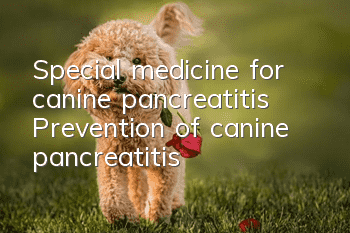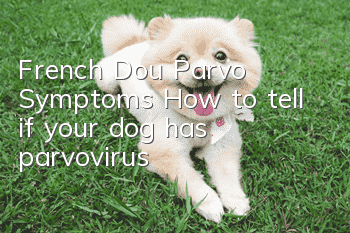Special medicine for canine pancreatitis Prevention of canine pancreatitis

Causes of canine pancreatitis
The main causes of canine pancreatitis are varying degrees of obesity caused by poor eating habits, drugs containing hormone ingredients, local anemia of the pancreas, expansion of biliary disease infections, etc., decomposition of liver glycogen With xenobiotic enhancement, the amount of glucose released from the liver into the blood will be greatly increased, the blood sugar level will rise, and will exceed the renal glucose threshold and be excreted in the urine, which will manifest as diabetes and pancreatitis.Symptoms of canine pancreatitis
Canine pancreatitis is a common pancreatic disease among dogs. Pancreatic disease refers to inflammation of the digestive gland pancreas, which is an infiltration of inflammatory cells that occurs at all stages. Typical symptoms and physical examination results vary, ranging from mild dog appetite loss and depression accompanied by vague abdominal pain. Canine pancreatitis mainly manifests as depression, loss of appetite, vomiting, diarrhea, abdominal tenderness, and mucosal pain. Congestion, skin damage, and shock may occur in severe cases.Treatment methods for canine pancreatitis
1. Control dietary therapy: avoid stimulating the production of pancreatic secretions, do not feed any food, and supplement 100-150ml of isotonic glucose sodium chloride solution and vitamins every day C500mg, intravenous drip in divided doses.2. Anticholinergic drug therapy: Anticholinergic drugs can prevent pancreatic secretion. You can use atropine 0.01mg/kg, isopyramide 0.03mg/kg, or probenzoline 5-15mg daily. Take orally 3 times.
3. Antibacterial and anti-inflammatory therapy: using spectrum antibiotics or a combination of multiple antibiotics, the effect is more significant, for example: penicillin 200,000/kg, streptomycin 50,000-100,000/kg, intramuscular injection 3 times a day, or Use gentamicin and kanamycin, 10-20 mg/kg intramuscularly twice a day.
4. Analgesic therapy: Analgesia has a good effect in preventing shock. Use pethidine 2-5mg/kg. If necessary, it can be injected again 6-12 hours apart.
5. Feed therapy: Chronic pancreatic disease can choose feed therapy. Choose high-protein, high-carbohydrate, and low-fat foods, and feed them regularly and quantitatively three times a day. You can mix trypsin into the food for replacement therapy.
Prevention of pancreatic disease in dogs
Pancreatic disease is caused by improper feeding and management, unreasonable feed structure, and excessive fat content in food. In order to prevent and avoid it, try not to eat it during feeding. Let the dog eat food with too high fat content and too high protein content, and increase the dog's amount of exercise. Among the precautions to prevent pancreatic disease in dogs, the feeding method is particularly important. Random articles
- What medicine should be used for redness and swelling between dog's toes? How to treat redness and swelling between dogs' toes?
- There are a few drops of blood after a dog poops. What causes blood in a dog’s poop?
- Dog's nose is losing hair. What to do if dog's nose is losing hair?
- What is the cure rate for dog parvovirus? Have you figured out what dog parvovirus is?
- Why does a puppy cough and have phlegm? Analysis of the causes of puppy’s cough and phlegm
- There are three types of dogs that look very similar to Erha. Although they look similar, they don’t break up the family.
- What's wrong with dogs having blood in their stools? Will dogs die if they have blood in their stools?
- How to treat a dog’s fever? What’s the most effective way to treat it?
- How to care for your dog after he is cured of parvo. How to care for your dog after he is cured of parvo.
- From whose parents does a puppy inherit its size? In addition to parents, there are also "third party" genetic effects.



